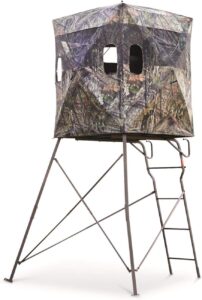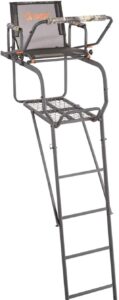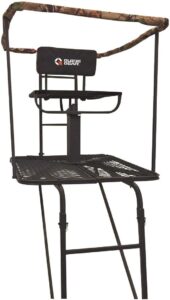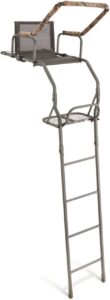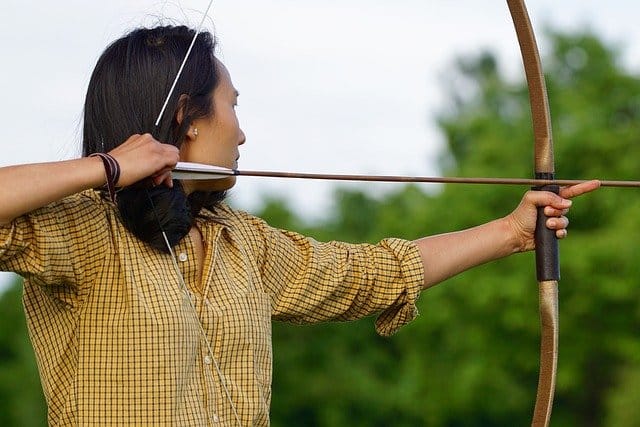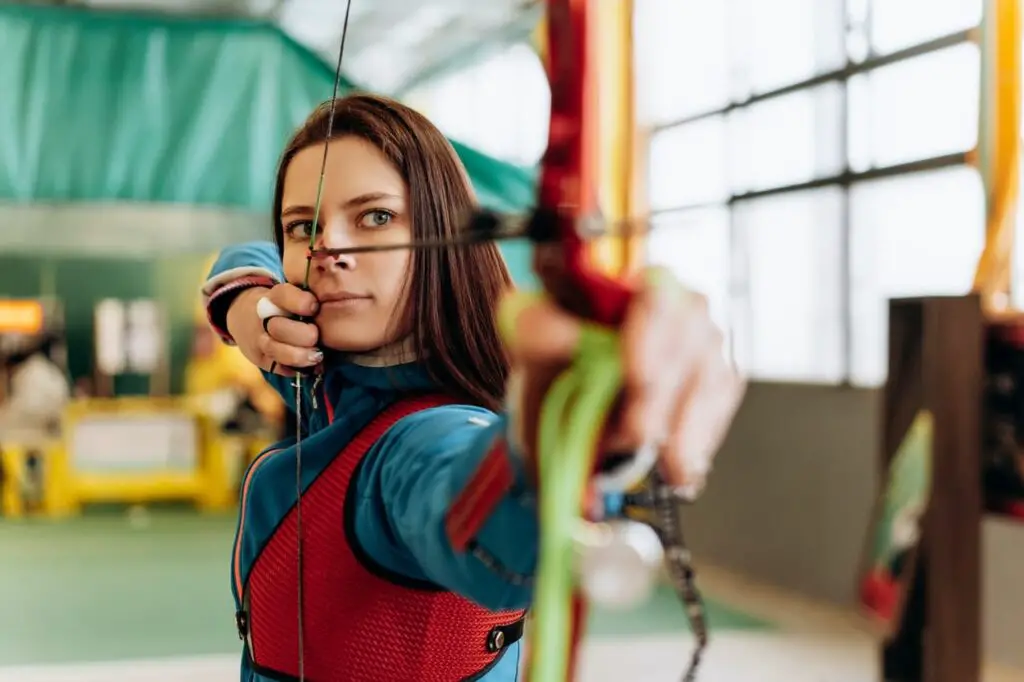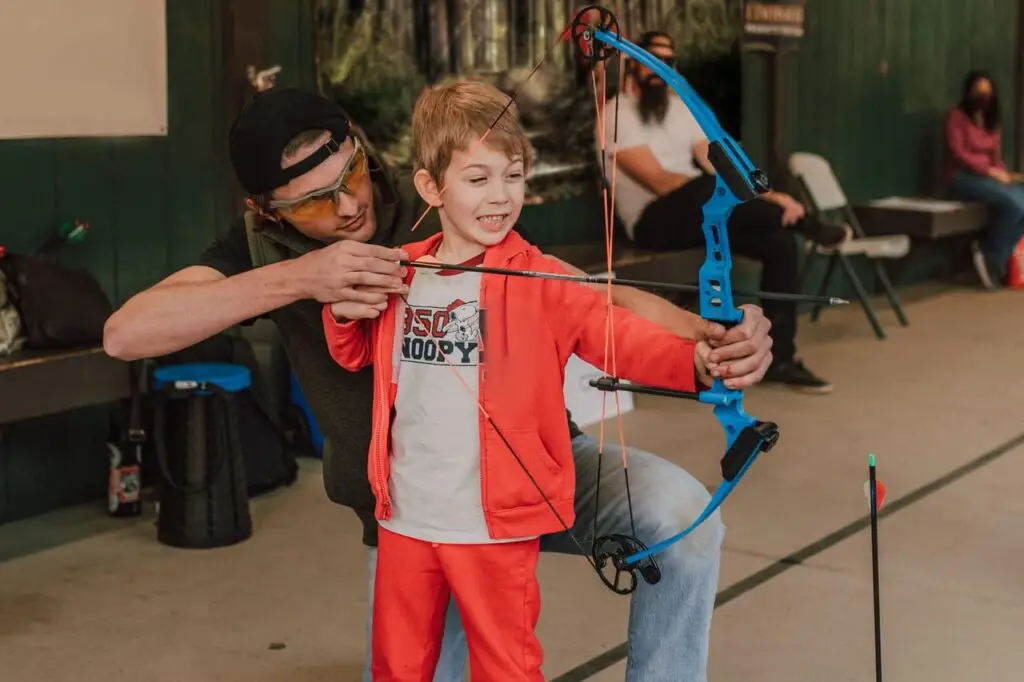An elevated hunting stand allows bowhunters to gain the upper hand on wary game by concealing movement and increasing visibility. Ladder stands provide a fixed position above the ground to shoot from. But with so many models and features to consider, it can be tricky choosing the right ladder stand for your needs. This comprehensive guide covers all the key factors to evaluate when selecting a ladder stand for bow hunting:
Intended Use of Ladder Stand
Consider how and where you plan to use your new ladder stand to narrow down the options:
- Permanent stand or multi-location portable? Permanent stands are larger and heavier duty for season-long placement. Portable stands are lighter and quick to set up/take down to move between locations.
- Hunting private land or public land? Stands for public land see more transport and need rugged durability. Private land allows heavier permanent stands.
- Hunting from the ground or hang-on? Hang-on stands separate the platform and ladder for greater flexibility. Ground blinds offer greater stability and quicker access.
- All day hunts or quick evening sits? All day comfort requires more space, padded seats, and backrests. Quick hunts can use more minimal options.
Number and Size of Hunters
Ladder stands are designed for one or two person capacity. For two hunters, choose a stand with a wider, deeper platform (at least 32″-36″ x 32″-36″) and weight capacity exceeding 500 lbs. For solo hunters, more compact stands under 32″ x 32″ will suffice.
Always check the specified weight limit and make sure the platform and seat can accommodate you and your gear. Taller, heavier hunters need reinforced construction and framing. There should be ample room to safely stand, sit, maneuver, and draw your bow.
Tree Size Compatibility
The ladder stand must properly fit the tree sizes where you want to place it. Measure tree diameters at your planned stand locations. Circumference measuring tapes make sizing easier.
Most ladder stands flex to accommodate a range of tree sizes, typically 6″-20″ diameter. Models with adjustable ladder sections offer the greatest flexibility for varying tree shapes and sizes. Stands for larger trees typically have longer stabilizer bars as well.
If hunting on trees at the ends of the size range, look for stands specifically rated for those dimensions. Improper tree fit risks damage to the tree and compromises safety. Always use bottoms spurs/teeth to grip the tree if within the stand’s diameter range.
What to consider when buying an electric cart for hunting.
Stand Height
Typical ladder stand heights range from 10 feet to 20 feet off the ground. At minimum, you want to be elevated enough to see over ground vegetation and have a clear shot path. The right height depends on the game, terrain, shooting lanes, and local regulations.
- 10-15 feet high offers good concealment from ground level and the ability to draw a bow undetected. Provides stable, easy access for hunters.
- 15-20 feet maximizes visibility for spotting game but also increases stand visibility. Allows shooting over more ground obstacles. More challenging to access and shoot from.
- Over 20 feet may be restricted by hunting regulations. Harder to safely access and shoot from. Added height doesn’t necessarily increase performance.
Access System
Ladder stands come with fixed ladders, adjustable ladder sections, climbing sticks, or a combination:
- Fixed ladders are simple but accommodate fewer tree sizes. Must match angle of selected tree.
- Adjustable ladder sections flex to match the tree and reduce bottom space needed. Offer the best tree fit.
- Climbing sticks provide the most flexibility and allow you to use the stand platform across multiple locations. Leave sticks in place and swap stand as desired.
Consider the access system that best matches your hunting requirements and abilities. Fixed ladders are simplest to set up. Adjustable ladders and climbing sticks provide more versatility.
Comfort Features
Spending all day in a stand requires comfort. Look for:
- Padded seat: Thick foam or slatted seat minimizes fatigue and numbness during long sits. Flip-up seats allow standing.
- Backrest: Support your lower back with a padded rail or frame backrest. Essential for all day comfort.
- Footrest: A bar or slatted foot platform reduces strain on knees and legs when sitting.
- Armrests: Padded armrests create a more relaxed seated position for waiting and shooting.
- Shooting rail: A padded gun/bow rest makes shooting more stable and reduces arm strain.
- Roomy platform: At least 32″ x 32″ for free movement and stretching your legs.
Shielding from Elements
Ladder stands leave you exposed to the elements. Shields provide protection:
- Enclosed box blinds with windows retain heat, conceal movement, and keep gear dry. Limit options for shooting angles.
- Umbrellas, roofs, and side shields deflect rain, wind, snow, and sun. Allow open shooting.
- Camo mesh panels offer partial concealment with lightweight. Best portable option.
- For ultimate simplicity, open stands have a basic platform and rail. You’ll need rain protection and layered clothing.
Safety Harnesses
Always use a safety harness with a ladder stand. Look for:
- Full-body harnesses with tree strap attachment for connecting your tether. Most secure option.
- Harness lineman’s belts allow freedom of movement on the platform while preventing falls.
- Integrated harness rails or attachment points to easily connect to the platform.
- Suspension relief straps or ropes to maintain circulation if immobilized after a fall.
Durability
Ladder stands endure bumps during transport, assembly strains, and exposure to the elements while supporting significant weight. Seek tough construction:
- Powdercoated steel frames provide rugged strength and weather resistance. Withstand years of use. Heavier than other metals.
- Aluminum or alloy metals resist corrosion and offer good durability at a lighter weight. Won’t rust.
- Solid welds, bolts, and fasteners prevent structural failure. No signs of cracking or loosening.
- Extended stabilizer bars and cross-braces prevent twisting and racking under load.
Noise Reduction
Stealthy movement minimizes noises that can spook game:
- Sound deadening material like foam or rubber on platform and ladder. Reduces clinks and squeaks.
- Tree connection points with rubber washers to silence metal-on-metal contact.
- Tie-down straps prevent ladder and platform rattling in windy conditions.
- Quiet camo shielding like fabric, mesh, and padded rails. Limits noise from contact.
Portability
For frequent repositioning, prioritize light weight and transportability:
- Lightweight aluminum or alloy metals reduce heft for packing in and out. Lean ladder profile and small platform.
- Collapsible or folding ladder sections quicken setup/takedown and save space.
- Backpack straps, sling straps, or handles for single-person carrying. Simplifies hauling through the woods.
- Compact disassembled size to fit inside an ATV or truck bed. Comes with a carry bag or case.
- Multi-section ladder and climbing sticks save weight when moving the platform separately.
Scouting Flexibility
To move your stand amongst multiple pre-scouted spots, look for:
- Climbing sticks allow you to lock in ladder sections at different trees, then swap just the platform.
- Quick-connect platform that easily detaches from the ladder assembly.
- Lightweight modular components you can carry together or separately.
- Option of leaving fixed ladder sections or climbing sticks safely secured on specific trees between hunts.
Price
Ladder stands range widely in price from $100 to $500+ based on size, capacity, features, and materials. Consider how often you will use the stand and your budget when weighing options.
For occasional use, more affordable stands under $200 can get the job done. Frequent hunters will benefit from investing in better quality stands with premium features and construction.
By carefully evaluating your needs against the characteristics of different ladder stands, you can select high-performing gear tailored to your bow hunting requirements. Seek out stability, safety, strength, accessories, and smart design features that align with how and where you will use your elevated perch to maximize success on your hunts.
